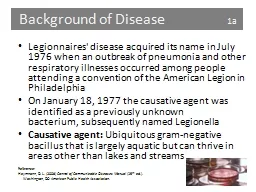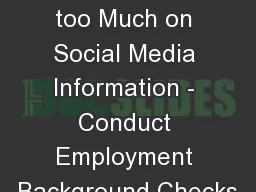PPT-Background of Disease
Author : test | Published Date : 2017-12-20
1a Legionnaires disease acquired its name in July 1976 when an outbreak of pneumonia and other respiratory illnesses occurred among people attending a convention
Presentation Embed Code
Download Presentation
Download Presentation The PPT/PDF document "Background of Disease" is the property of its rightful owner. Permission is granted to download and print the materials on this website for personal, non-commercial use only, and to display it on your personal computer provided you do not modify the materials and that you retain all copyright notices contained in the materials. By downloading content from our website, you accept the terms of this agreement.
Background of Disease: Transcript
Download Rules Of Document
"Background of Disease"The content belongs to its owner. You may download and print it for personal use, without modification, and keep all copyright notices. By downloading, you agree to these terms.
Related Documents














